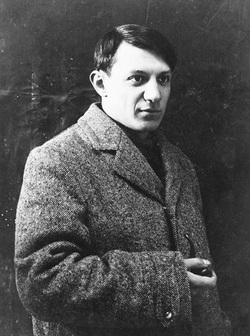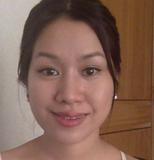|
A top visual artist in Cebu once sold his artworks at P30,000 to P100,000 apiece. Imagine how collectors felt five years later when he undercut prices of similar pieces to more than half, selling them at a meager range of P5,000 to P15,000. While price setting is a sensitive, sometimes irritating job for creatives to do, this artist owed it to his collectors to respect the value of the pieces they paid for. In the art market, buyers buy artwork as an investment. Consistency in pricing is thus a cornerstone of successful selling. But how does one determine price?  Pablo Picasso (via: Wikipedia) Pablo Picasso (via: Wikipedia) Pricing products Pricing products (artworks in our case) isn’t just about calculating numbers. One cannot simply draw cost figures against an artwork, add markup on it, and place it immediately on the market for sale without considering several key factors first: general prices of artworks from artists of similar style or caliber, buyers’ willingness to pay, present and future value of the artwork to the buyer, and others. The point in which one’s willingness to sell an artwork at a given price is identical to the buyer’s willingness to pay for it at the same price is called “equilibrium point”. Although one isn’t necessarily required to sell at this price, it is helpful to identify the equilibrium point prior to making pricing decisions. There are various approaches to setting prices which are applicable to the art industry; among them are the below: Cost-plus pricing As the name implies, cost-plus pricing calculates product price based on the costs associated with it plus a little extra for profit. In our artist example, product cost includes painting hours, painting materials, and framing. A clear drawback in cost-plus pricing is that it doesn’t consider the buyer’s perspective (how the client values the artwork, how much he or she is willing to pay), the future value of the artwork (value appreciates as the artist gains more recognition, and awards). Competitive pricing In this approach, one sets prices by determining what others are charging. Despite art being unique, art dealers, collectors, consultants and agents make price comparisons from artist to artist all the time. Base price ranges can be determined based on prices of artworks by artists with comparable experience, resumes and sales records. Value-based pricing Value-based pricing considers the value of the artwork as opposed to the cost incurred to create and produce it. To do this, one determines how much money or value, current or future, the artwork will generate for the buyer. This value could originate from factors such as increased happiness or stability, or future investment returns. An artist who’d have been a good marketer was Pablo Picasso. A popular story was of him sitting down at a café one beautiful spring morning in Mougins in 1969. The story goes, and I quote the source (http://blog.xero.com/2012/08/what-if-picasso-had-been-an-accountant/): A visitor sits down, orders a café, and couldn’t believe her eyes. There, sitting just two tables away was Pablo Picasso. And not only was the great artist sitting there, he had his sketchpad and materials with him. She couldn’t believe it – what an opportunity this is. Somewhat breathlessly, she flips her hands through her hair and sits down next to Picasso. In her faltering French she exclaims how she can’t believe her luck and she wonders if Picasso could quickly sketch her. “Bien sur – of course,” says Picasso. “I love nothing better”. So the woman poses and Picasso studies her with the eye of a great artist. He then quickly sketches and shows her the completed piece. “Oh my God,” she exclaims, “I must pay you for this!’ “Indeed you must,” says Picasso. “that will be 400,000 Francs.” “WHAT! I! That took you just 90 seconds to do, that’s way too much.” “No, Madam, you are incorrect – it did not take me 90 seconds at all; it took me my whole life to know how to do that.” |
AUTHOR
I'm passionate about business, art, and technology. For more about me, click here.
BOOK PROJECT
Here's a book I co-wrote with a bunch of industry colleagues. Not sure if you'll find it useful, but feel free to check once you can. OTHER SITES
Personal
Tortured squid Hobbies & other stuff Work LegalMatch Philippines Artcebu Others Ateneo Graduate School of Business University of San Carlos Archives
October 2020
|

